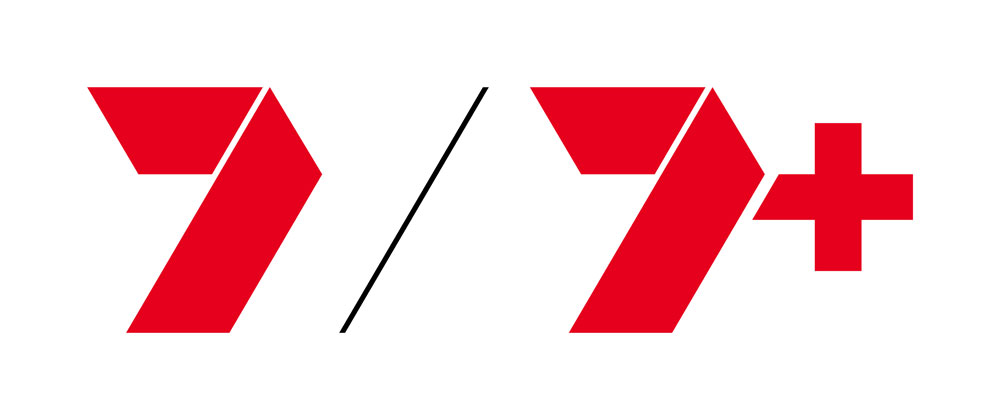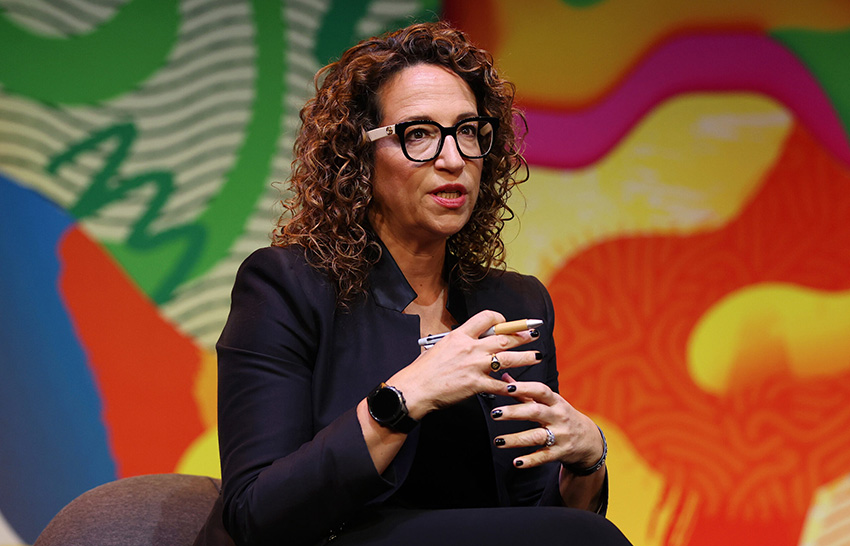SxSW Daily Wrap - Monday: Audio erotica; BMW appoints Atomic 212 for ANZ media; Optus hails Ash Barty, Daniel Ricciardo as optimism, inspiration officers; Brain-computer interfaces
An Mi3 editorial series brought to you by
7 / 7plus


Can't make every session at SxSW Sydney? Fear not. The Mi3 team is on the ground with this daily wrap of bits, bytes and banter from SxSW sessions, speakers and conversations each day. Here's the first of Mi3 dispatches from Monday 16 October.

David Barnett performs the Smoking Ceremony during the opening ceremony. Pic: Brendon Thorne/Getty Images for SxSW Sydney
Optus’ long road to recovery; serves Daniel Ricciardo’s ‘signature salad’ in its cafes
Optus Sport’s recent coverage of the FIFA Women’s World Cup pulled “huge numbers” and garnered brand love for the telco; cited as one reason why its brand value has grown by $1 billion (up 27 per cent) in the past 12 months per Brand Finance data.
However, the Matildas aren’t the only sports stars making a mark at the telco. F1 driver Daniel Ricciardo and Ash Barty are, respectively, Chief Optimism and Chief Inspiration Officers. Although some news outlets scoffed at the signings, Optus Head of Consumer Marketing Cam Luby told SxSW during a recording of the Own the Moment podcast from Seven House that the pair are “more employees than ambassadors”. In fact Dan Ricciardo is a frequent visitor with his own staff pass, and could soon make a mark in more unconventional ways.
“This hasn't happened yet, but we're about to make a Dan Ricciardo signature salad at one of our cafes,” said Luby (right), pictured above with podcast host James Pember. “He plays a role in inspiring our staff and is really a part of the company.”
Inspiration and optimism from the likes of Ricciardo and Barty are more than welcome at the telco, which is still recovering from a cyber attack a year ago that saw the data of 10 million past and present customers stolen.
“One of the biggest insights that we’ve learned is that brand reputation, trust and these things are down by the elevator and up by the stairs," Luby added. "It can change overnight if you're not careful, but then you have to be consistent over a long period of time to bring it back.” - Arvind Hickman

Soon Daniel Ricciardo, right, will be able to serve Optus customers more than tasty phone deals

L-R: Own the Moment podcast host James Pember and Optus Head of Consumer Marketing Cam Luby
Sexual wellness and romance are taking over the airwaves
For some, the pleasure is in role play or foreplay. For others, it’s an auditory sensory experience of reassuring whispers that send tingling sensations from the top of the scalp down the back of the spine. Some might prefer the sweet romantic boy meets girl tale found in the pages of a Mills & Boon novel. Then there’s those who get a thrill from a steamy, thrusting, all-sensory sexual encounter.
All of these experiences and more can be found in the growing array of romantic fantasy, intimate podcasts and erotica audio content exploding through our audio channels. During a panel session at SxSW Sydney, two creatives in the field – Private Affairs romantic fiction podcaster, Christine ‘Kix’ Mwaturura, and Pillow Talk and Flirties podcast producer, Jess Hamilton – were joined by Kate Armstrong-Smith from Othelia and AI storytelling platform, Love Generator, plus Audiocraft CEO and moderator, Kate Montague, to discuss how the growing sextech and sexual wellness industries are infiltrating the world of audio storytelling.
Largely shaped by female and queer creators as well as consumed by them, this mix of audio content stretches from fictional audio storytelling to employing Autonomous Sensory Meridian Response (ASMR) to get an immediate, sensory effect. Why is such content resonating? Figures show 90 per cent of women use mental framing, or scenario creation, to get turned on. But up until recently, investment in female pleasure was largely focused on the body, not the brain.
Not anymore. Sexual curiosity and searches on fetishes peaked at an all-time high during the pandemic. And this very desire for human connection post-pandemic just keeps heating up.
Creators said using audio as a creative platform to explore intimacy, romance and erotica provides unique ways of co-creating content with audiences. For Mwaturura, enabling listeners to authentically engage with the expressions and interjections of her Zimbabwean characters honours diversity and helps them better understand her culture’s lovable quirks. For Hamilton, niche communities of listeners are comforted through digital non-gendered language, relationship roleplay and 3D sound plains that trigger a highly emotional, supportive sensory response. And for all creators in this space, listeners get to bring their imagination and heart’s desires to what they’re hearing. To coin the language of the broader wellness industry itself, this stuff is ‘Headspace, but horny’. - Nadia Cameron

Jason Clarke at the Once Upon A Time In Hollywood session. Pic: Brendon Thorne/Getty Images for SXSW Sydney
NSW Culture Minister slams Sydney’s lockout laws as ‘creative industries killer’
A politician has finally admitted what many Sydneysiders and night revellers have known for years – the disastrous lockout laws that were imposed by the Coalition between 2014 and 2020 have destroyed city nightlife, taking down large swathes of the creative industry with it.
John Graham, the NSW Minister for the Arts, Minister for Music and the Night-time Economy, pulled no punches.
“Over the past 12 years, the number of music venues in New South Wales halved and at its low point there were only 133 licensed music venues left in the state. Sydney's lockout laws had become a global embarrassment,” he said in a welcoming address to the event.
“Some of you may remember when Madonna was refused entry to her own afterparty because she arrived at 1:45am. Prince, Drake, Marilyn Manson, Ed Sheeran and Smashing Pumpkins each received the steely shake of the Sydney bouncer’s head.
“During this dark time, New South Wales had a web of bans or restrictions on venues, including on dancing and rock music. It also had bans or restrictions for live music, discos, DJs, drumming, four piece bands, singer songwriters … and mirror balls because they might lead to dancing.
“But then the city fought back. We have started as a government to change the laws in this state, to value music, to value creativity, to support the community and bring back vibrancy.”
Graham has set his sights on changing the rules for sound and noise complaints that allow a single neighbour to make serial complaints that shut down long-running venues.
The reception to his speech delivered the kind of decibels that would have seen local venues receiving a closure notice during Sydney’s darkest lockout days. - Arvind Hickman

NSW Minister for the Arts and...Night-time Economy John Graham Pic: Brendon Thorne/Getty Images for SxSW Sydney
BMW appoints Atomic 212 as media agency for ANZ
Word on the street around SxSW is that BMW has appointed indie media firm Atomic 212 to an expanded media remit across Australia & NZ after a competitive review. What's very SxSW about the appointment is that we hear the carmaker is gearing up for a huge push aligning its brand to electric vehicles for 2024, just as the category creator, Tesla, starts to feel some competitive heat. We hope to hear from BMW Group Marketing General Manager, Alex McLean, on the grand plans this week. - Paul McIntyre
Amy Webb warns 'catastrophic' Gen-AI powered future like living with thousands of paper cuts
One of the world’s leading futurists, Amy Webb, has warned that the rush to embrace Gen AI could place too much power in the hands of very few tech giants. The upshot is that search could be replaced by a frictionless system where technology provides all of the answers without human interrogation. For brands, a catastrophic outcome could see the erosion of choice and human marketing. Check out our coverage of Amy's thought-provoking and somewhat dystopian vision of a Gen-AI future. - Arvind Hickman

Amy Webb, CEO of the Future Today Institute speaks during her keynote conversation at SxSW. Pic: Brendon Thorne/Getty Images for SxSW Sydney

Aussie actor Charmaine Bingwa at the Once Upon A Time In Hollywood session Pic: Brendon Thorne/Getty Images for SxSW Sydney
Brain-computer interfaces – think and it shall be communicated
It looked like a potentially mindbending session at UTS Business School – aided by WPP’s SxSW sponsorship and logo all over the big screens for this session – and it was.
An Australian-developed medical technology from Australian firm Syncron allows those suffering from the likes of Motor Neuron Disease – or paralysis – to think and have a computer, or mobile phone even, to do the rest – like communicate on messaging apps, write emails and books, or turn off the lights. In the words of one of Syncron’s co-founders and Professor at Melbourne University’s Vascular Bionics Lab, Nicholas Opie, it can “allow thoughts to be extracted from the brain and used in another form”.
How? Well certainly it no longer requires skulls to be drilled – in Mi3’s remarkably underdeveloped understanding of brain science, Synchron’s biomedical breakthrough, currently in clinical trials, allows a stent-like device to be inserted into the jugular, guided and eventually landing on the wall next to the motor cortex, the part of the brain which controls muscle movement. There it listens and deciphers its electrical signals and wirelessly transmits them to a machine, which can act on those electrical commands from a functioning brain.
So is this the near future of communications? Well, as much as Elon Musk’s Neuralink is talking beefy brain breakthroughs, Professor Opie is more circumspect. “We've been working on this for 12 years and we still haven't got a product out to market,” he said in response to Mi3’s simple question. “Someone else coming along and doing it for other commercial purposes is a long way off. I do think that a lot of the really good applications for this are going to be medical first.”
But Synchron’s Director of Advanced Technology, Gil Rind, went a little further. “From a medical perspective, and from a non-medical perspective, the idea of a brain computer interface, I believe, is going to expand out people's ideas in terms of what they can do. And you know, the 8 billion people that exist on earth are going to be able to come up with a lot better ideas than what I could come up with in my office. So I'm excited to see what people are able to come up with for the technology and hopefully we can do it in a responsible and ethical way.” - Paul McIntyre

Brains, waves and WPP

Dylan Alcott talks about Creating Inclusive Film And TV Pic: Brendon Thorne/Getty Images for SxSW Sydney
Web 3 is ushering in a new era of open data – and it’s a great thing for brands
The future of Web 3 is open data enabling consumers to control what information they share and who they share it with. It’s a progression that could finally give brands the key to understanding the things that matter most to their customers, per pundits speaking at SxSW Sydney.
But gaining loyalty off the back of such insight will only be achieved if brands are willing to also embrace the two-way value exchange, partnerships and experiences required along with it. Check out Mi3’s full report on the future of Web 3 and what it means for the marketing industry here. - Nadia Cameron
